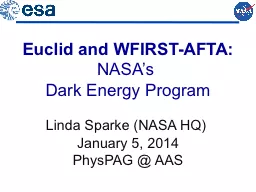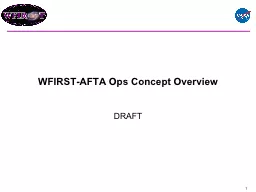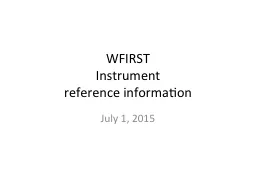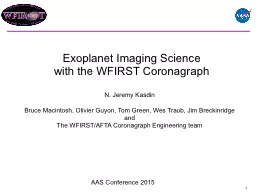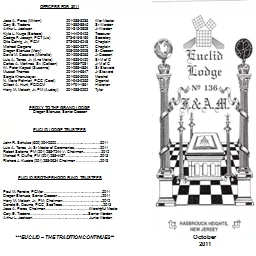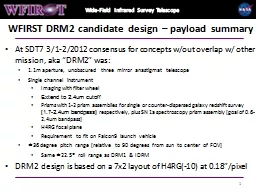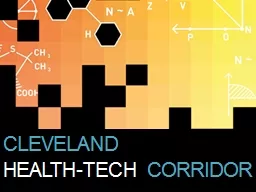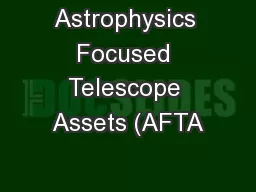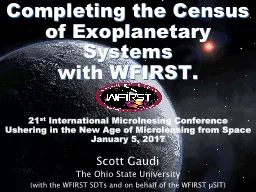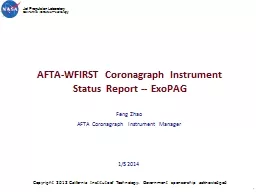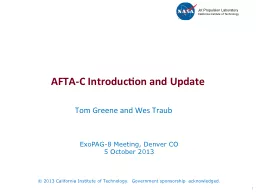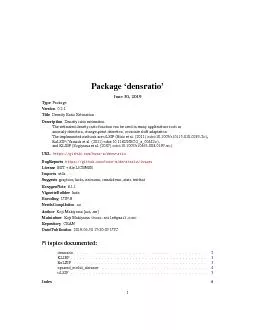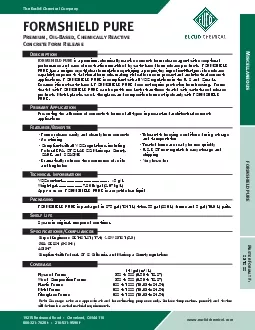PPT-Euclid and WFIRST-AFTA:
Author : stefany-barnette | Published Date : 2016-03-01
NASAs Dark Energy Program Linda Sparke NASA HQ January 5 2014 PhysPAG AAS 2013 government sponsorship acknowledged 2004 Dark Universe Mission Theme proposed
Presentation Embed Code
Download Presentation
Download Presentation The PPT/PDF document "Euclid and WFIRST-AFTA:" is the property of its rightful owner. Permission is granted to download and print the materials on this website for personal, non-commercial use only, and to display it on your personal computer provided you do not modify the materials and that you retain all copyright notices contained in the materials. By downloading content from our website, you accept the terms of this agreement.
Euclid and WFIRST-AFTA:: Transcript
Download Rules Of Document
"Euclid and WFIRST-AFTA:"The content belongs to its owner. You may download and print it for personal use, without modification, and keep all copyright notices. By downloading, you agree to these terms.
Related Documents

